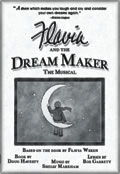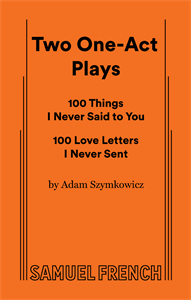
Could I Have This Dance?
- Full Length Play, Dramatic Comedy, 1980s
- 3M, 3F
- ISBN: 9780573696145
Playwright Doug Haverty uses Huntington's Disease not in the telepic fashion where the disability is the star, but as a vehicle to explore human nature...The play is kind of cross between Lee Blessing's Independence and Arthur Kopit's Wings... Every character has color and dimension.
Daily Variety
Description
- Full Length Play
- Dramatic Comedy
- 105 minutes
- Time Period: 1980s
- Target Audience: Adult
- Set Requirements: Unit Set/Multiple Settings
- Cautions: No Special Cautions
- Performance Group:
- Large Stage, Dinner Theatre, Community Theatre, Professional Theatre, Reader's Theatre, Senior Theatre
REVIEWS:
A gripping, emotional piece that both educates and enlightens...Haverty’s story is engaging and informative, his dialogue crisp and humorous. The characters are interesting and well-developed...The strength of family-in-crisis is always what gives one renewed hope. Could I Have This Dance?, takes that strength and provides a courageous arena for its expression.
Burbank Times
“Playwright Doug Haverty uses Huntington’s Disease not in the telepic fashion where the disability is the star, but as a vehicle to explore human nature...The play is kind of cross between Lee Blessing’s Independence and Arthur Kopit’s Wings...Every character has color and dimension.”
Daily Variety
In a profound blend of pathos and humor, the memorable world premiere of Doug Haverty’s drama repeatedly transports the audience from out right hilarity to heartfelt sorrow...electrifying...this show is one of the season’s best.
Los Angeles Reader
Could I Have This Dance?, under Doug Haverty’s deft, comic hand is a story about the uncertainty of life. It’s about the war of fate and genetics.
Daily News
Haverty knows of what he writes and has transferred both his knowledge and heart to a text that pulls no punches.
Los Angeles Weekly
Haverty has tackled a very serious subject and delivered it in a play that also entertains...(He) has written a sophisticated story about relationships without preaching about the disease. He doesn’t have to. It’s underneath everything...a very interesting new play!
Daily Breeze
Characters
- Casting: 3M, 3F
- Casting Attributes: Parts for Senior Actors, Expandable casting
Available Material
| Name | Price |
|---|---|
|
Could I Have This Dance? Script
Order Now
Woodie Guthrie had it. Arlo may have it. It's usually hereditary, but not always passed on to every offspring. The symptoms do not normally appear until a person reaches their mid-forties. Referred to as 'The Dance of Death,' Huntington's Disease is a complete degeneration of the nervous system. Recently, medical researchers developed a blood test to determine if the disease is present in young people. The question is: Should we know? There are over 100,000 people in the U.S. that are currently 'at risk.' Of these people, only 500 have actually taken this test. Could I Have this Dance? is about two sisters in their 30's: Monica and Amanda. Their mother, Jeannette, has Huntington's and lives with her daughters. The action takes place in the Los Angeles office/home where the girls run a thriving public relations firm, Grapevine, which was started by their mother. During the course of the play, we come to understand the time bomb these two sisters live with. Their possible fate is dramatically evidenced in the characterization of Jeannette which is interpreted through dance. The effects of the disease are 'visible' to those onstage, but 'invisible' to the audience, except in a few rare instances where the actualization of the disease is revealed. The other characters in the play are the men in these women's lives. Jeannette's husband (and the girls' father), Hank, has come to accept his wife and still loves her very much. Both Monica and Amanda have shunned long-term romantic relationships because of their unknown fate; bitter Monica plays it safe and vibrant Amanda takes every chance with young, one-night-stands. Yet the girls and their father never lose their sense of humor. As the play unfolds, both women have met men they'd like to get serious with and the knowledge of the test both repels and attracts them: Amanda, desperate for the answer and Monica, in morbid fear of it. Could I Have this Dance? is ultimately about love and cherishing what life we are given. This is a deeply romantic play about difficult choices. As the once-murky medical crystal ball becomes clearer, the universal question remains: Are we better off not looking at what the future holds? |
$24.95 |




